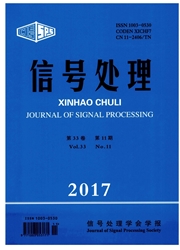

 中文摘要:
中文摘要:
3D MIMO(Three Dimension Multiple Input Multiple Output)技术是下一代通信系统(5G)关键的技术之一。为了更好地评估3D MIMO通信系统的性能,需要建立一种准确的3D MIMO信道模型。在现有的3D MIMO信道模型中,3D Kronecker模型由于其简单性而得到广泛应用。但3D Kronecker模型假设收发两端是不相关的,与实际信道特性不符。为解决该问题,本文在WINNER II中2D信道模型的基础上引入仰角维度,建立3D MIMO信道模型,并推导收发两端的相关矩阵,通过分解收发两端相关矩阵构建3D Weichselberger模型。本文着重分析六种典型场景下3D Weichselberger模型的空间耦合矩阵,并通过理论推导分析各种场景下的3D MIMO信道特征,同时推导出3D Weichselberger模型的互信息上限的表达式。仿真结果显示,相对于3D Kronecker模型,3D Weichselberger模型能更准确地描述3D信道的传播特征。
 英文摘要:
英文摘要:
3D MIMO (Three Dimension Multiple Input Multiple Output) is one of the key technologies in next communica- tion system (5G). In order to better assess the performance of 3D MIMO communication system, it is necessary to build an accurate 3D channel model. Among various 3D MIMO channel models, 3D Kronecker model has been widely used since it can simplify the real channel model as spatial transmitter and receiver uncorrelated, which is not coincident with the actual channel. In order to circumvent this restriction, a 2D MIMO channel model is extended to 3D on the basis of WINNER II by introducing the elevation angle. And the correlation matrices of two link ends are respectively derived in this paper. A 3D Weichselberger model is constructed through the eigenvalues decomposition of correlation matrices at two link ends re- spectively. In this paper, spatial coupling matrices are analyzed in six typical scenarios and 3D MIMO channel characteris- tics are deduced. Furthermore, the upper bound of mutual information for 3D Weichselberger model is derived based on spatial coupling matrix. Simulation resuhs show that, compared to 3D Kronecker model, 3D Weichselberger model is more close to 3D MIMO channel characteristics.
 同期刊论文项目
同期刊论文项目
 同项目期刊论文
同项目期刊论文
 期刊信息
期刊信息
